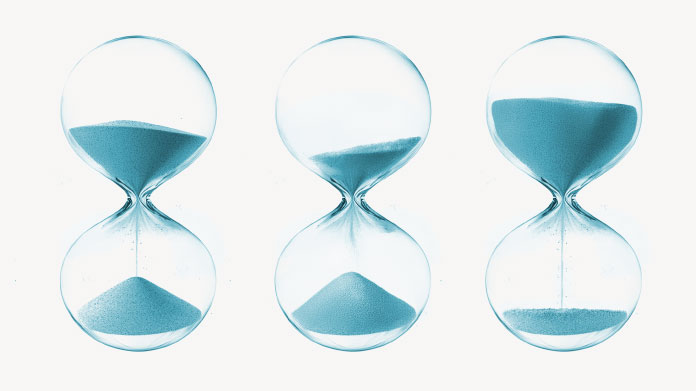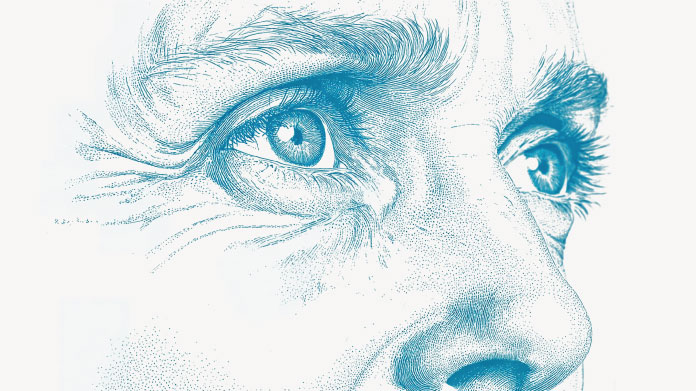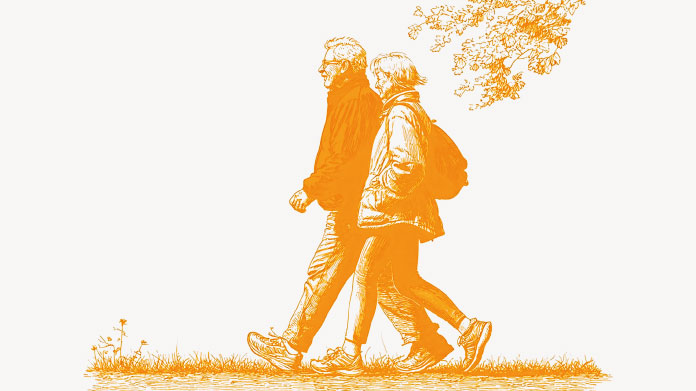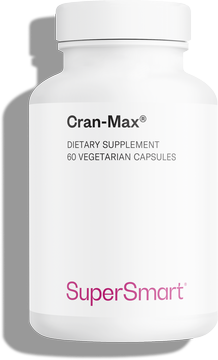The conversation about cancer you wished you had read earlier...
Diet, the impact of stress, possible causes of mutations, the processes involved … Two people discuss in depth the specifics of cancer.
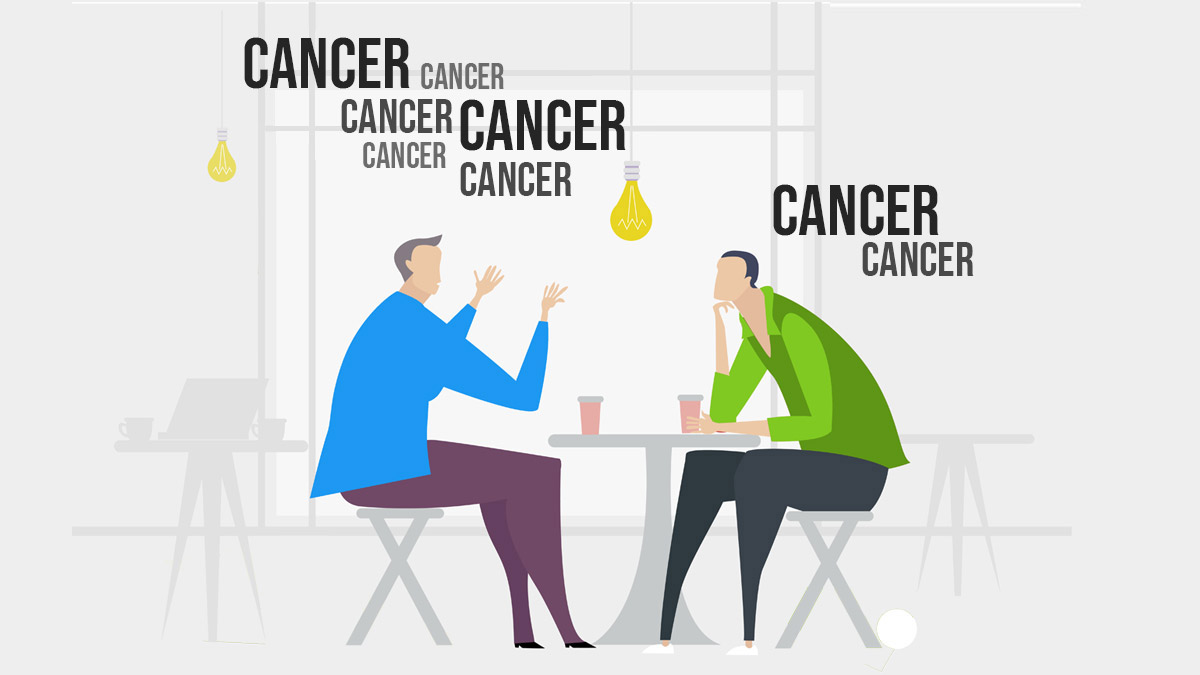
One of my friends has just found out that she’s got breast cancer. She’s 44, sporty, a vegetarian … It’s terrible. She lost her husband in a car accident last year, and I’m wondering if it wasn’t that that caused it …
I’m so sorry to hear about your friend. But you know, while the traumatic event she suffered last year can’t have helped, it wasn’t the cause of her cancer … The breast tumor detected by her doctors contains at least a billion cells. But at the outset, when it all began, there was only one. A single cancer cell which divided into two identical cancer cells, which then produced four cells, then eight, sixteen, thirty-two and so on, until it reached a billion cells.
In order for one cell to turn into a billion, the process of ‘cell division’ has to be repeated 33 times. It’s a very energy-intensive operation which can take some time: an estimated four months or so for one breast cell. If you ‘do the maths’, it’s clear that the first cancer cell was already there at least 132 months ago (4 months x 33), that’s more than 10 years ago! So if this tumor was caused by a single event, it must have happened over a decade ago …
More than 10 years ago? When she was 34? But why? Why so young?
You know, getting cancer is a bit like ‘winning’ the lottery. Of course, no-one wants to win this particular lottery, but everyone plays it, in spite of themselves. Every day, we get a ticket which gives us a chance of winning the ill-fated prize: the development of this famous first cancer cell. Even though the chances are minuscule, there are always winners because there are so many of us and we play it again and again, every day of our lives.
So, it’s just down to … bad luck?
No, I hadn’t quite finished my reasoning. In fact, this lottery is a bit different from the norm: we don’t all get the same number of potentially winning tickets. People who smoke, for example, get a lot more tickets than those who don’t. And it’s a similar story for those who frequently expose their skin to the sun without protection, or those who don’t get enough sleep. It doesn’t necessarily mean these individuals will definitely win at some point, but it does increase their chances of winning compared with those who only have one ticket. Some people end up with a huge number of tickets because they accumulate many risk factors for cancer such as obesity, a sedentary lifestyle, poor diet, excessive alcohol consumption, smoking … And with so many tickets, unless you’re very lucky (which does happen), it’s simply a question of statistics: you’ll end up winning one day. It must be said, however, that 5%-10% of breast cancer cases are genetic in origin: without realising it, these people have got more tickets than others of a similar age despite not having been exposed to risk factors.
Unfortunately, it’s entirely possible to win this lottery even if you don’t have many tickets. Perhaps that’s what’s happened with your friend …
How and when did she get cancer?
Yes, I’m wondering that too. She lived such a healthy life … How exactly did it develop? What happened 10 years ago when the first cancer cell appeared?
First of all, you need to know that the human body contains over one million billion cells. At the very beginning, however, there’s only one, just like your friend’s tumor. The first cell is the result of a sperm fertilising an egg. This very first cell divides into two cells, which in turn create four cells and so on, until they form a complete, complex, multi-cell human being.
Complex because cells don’t just divide: they have specific functions and responsibilities and adopt particular forms, depending on where they are in the body. Lung cells are nothing like blood cells, or brain cells or liver cells. They each have a precise form and specific functions.
But what exactly is a cell?
It’s a kind of ‘plastic bag’ which carries material in order to divide and perform its function. What’s in each plastic bag depends on the type of cell it is. Blood cells don’t contain very much because they have to make room for the hemoglobin that transports oxygen to lung cells. In contrast, liver cells contain a lot of material needed for constant detoxification of the body: they are real biochemical factories.
And what makes these ‘plastic bags’ living things?
They’re described as ‘living’ because they’re able to produce a lot of amazing things from the ‘recipe books’ they carry with them. These ‘recipe books’ are in fact, genes. They’re kept in ‘libraries’ called chromosomes. And these recipes are not written on paper, but on very fine strands of DNA. If you put all the strands contained in a single cell end-to-end, they would measure more than 4 meters in length.
The recipes are not written using our alphabet, but with a much simpler one called the genetic code. There are only four letters in this alphabet, though the recipe’s sentences can be very long, and the possibilities endless. A cell is only able to divide because of these recipes. When it receives an adequate signal, it responds by selecting the most relevant recipes and applying them. Meticulously. There are recipes which enable the production of ‘construction materials’ such as proteins, others that allow these materials to be correctly assembled and others still that make them inaccessible. These latter recipes are rather special: they are ‘gene switches’. They are very, very important as they prevent cells from accessing certain recipes at specific points in life.
Remember what I said just now: cells use special recipes to divide and form a whole, multi-cell human being. But once this growth is complete, the division recipe is no longer of any real benefit to the cell. In fact, it can even be dangerous: if a lung cell continued to use it, dividing ad infinitum, it would end up completely deforming the lung! That’s why there are recipes that ‘lock out’ other recipes, as soon as the cells have finished with them. These recipe books remain somewhere in the library, but cells can no longer open them, it’s as if a lock were preventing them.
Except, that is, in special cases when it again becomes necessary to access these recipes. When, for example, you fall over and scrape your skin, and your cells need to divide to replace dead or damaged cells. So there is another type of recipe which ‘picks the lock’ to provide such access in special cases (fractures, burns, dying cells) by. This exceptional access is controlled by recipes called anti-oncogenes.
All this is very carefully coordinated in the cell. If gene switches or anti-oncogenes suddenly started acting arbitrarily, the cell would have immediate access to dangerous recipes. They are the guardians of the library: one mistake from them and the cell can do absolutely anything. That’s what cancer is – the result of a breakdown in the function of gene switches and anti-oncogenes.
The potential causes and origins of cancer
But what causes this dysfunction? Why do things suddenly go off the rails?
As I mentioned earlier, cells use a four-letter alphabet to read these recipes. They decipher long sentences consisting of a strictly-ordered series of letters one after the other. This order determines the meaning of the sentence and thus the recipe.
If, for example, the letter ‘n’ was to be replaced in a normal cooking recipe, you’d still be able to understand it. But with the genetic code, the slightest change – an inversion or deletion – could completely change the sentence’s meaning. The cell would no longer be able to interpret the right instructions! One of two things could happen: either the cell would stop following the recipe because it didn’t make sense, or it would continue to carry out the wrong instructions and produce faulty material, inconsistent with the original signal. Either way, it could be disastrous!
If it was the type of recipe that either locks other recipes away or provides access to them, such as gene switches, it could be catastrophic. The cell might do the complete opposite of what it should: it could read a recipe that it should, at all costs, be prevented from accessing. To put it simply, a cell could suddenly find itself able to divide again when it had long been prevented from accessing the recipe for this.
Why do mistakes suddenly occur in these ‘recipe books’?
I was just coming to that. In order to perform these functions, cells need energy. A lot of energy. Just as cars need petrol to move, so cells depend on sugar and oxygen. All cells therefore have little powerhouses that enable them to ‘burn’ oxygen and sugar to obtain energy. Although this highly ingenious mechanism was invented hundreds of millions of years ago, it is not perfect.
When cells burn oxygen, highly dangerous particles are simultaneously released in the whole cell. These particles are rather like the small steel balls in a pinball machine, rapidly propelled by a flipper around the cell. They go in all directions and affect every cell structure including the membrane – which takes them prisoner – and the genome which contains our famous recipes.
These ‘collisions’ can cause damage to the proteins and fatty acids that make up the membrane. But this is temporary: the cell can quite quickly re-make them all. Because of the recipe books in the library. Imagine now that these steel balls crash into these books, the very books which are used to produce all these elements. What would happen then? Parts of the recipe may be deleted; letters and paragraphs might get transposed. With consequences that are as unpredictable as they are dangerous: would it then be possible to read and follow the recipe as required?
That’s what’s happening at this very moment in our cells: small, oxidant balls are randomly crashing into our cell structures.
So does that mean the damage starts the minute we’re born?
Yes. But the body anticipates it and constantly produces compounds that can block these steel balls. These are the famous antioxidants, much-discussed in the media. They act like ‘bullet-proof vests’, taking the flak so that cell structures are protected against them.
So you’re saying there’s a constant war going on in our cells? And these antioxidants, are they really ‘up to the job’? I’m asking the question, but I sense the answer’s going to be no …
In normal situations, they’re very effective. Not only does the body produce them continuously, but it is also able to use those present in food, such as vitamins C and E, and flavonoids. Suffice to say that when the diet is good and the body has all it needs to produce its own antioxidants, the oxidant balls are pretty well-neutralized.
In abnormal situations, however, when cells come under constant attack and the diet is poor, antioxidants can no longer cope and the collisions increase. This is known as oxidative stress. And the big problem is that this situation, which is fundamentally abnormal, is becoming increasingly ‘normal’ …
What is it that increases the number of these ‘oxidant balls’ in our cells?
There are many factors which can cause a dramatic rise in these numbers. Smoking, alcohol, sun exposure, pesticides, asbestos – all of these are important contributory factors, as is being stressed, getting insufficient sleep, being overweight and eating badly.
In some cases, when our diet is poor, or when we reach old age, it’s more a question of declining numbers of ‘bullet-proof’ antioxidants. The older we get, the less effective our antioxidant production.
Whether it’s an increase in the number of balls or a decline in antioxidant levels, the result is the same: there are too many balls and the risk of mutations increases.
I get it. And cancer starts to develop when one of these mutations affects a highly ‘sensitive’ recipe.
Not yet. At this stage, the body still has the necessary resources to prevent the worst! If by chance, the collisions lead to ‘mutations’ in key genes such as ‘gene switches’, the cell has two strategies.
The first consists of deploying a ‘patrol’ to constantly monitor the state of our recipes. This ‘patrol’ inspects the condition of DNA strands by comparing the letters in front of them with a recent ‘photograph’ of these same letters. If it detects an error, it cuts the strand, throws it away, produces a new one and reattaches it properly. It’s a police force that’s permanently on duty. But it’s better at finding errors than repairing them! And from time to time, the right letter doesn’t get copied.
Which is why the cell has a second system of control. If things go wrong, it has a ‘fiendish’ recipe in its library which consists quite simply of ‘blowing everything up’. This recipe, called apoptosis, basically produces a button which when pressed, makes the cell explode. Better to die than endanger society. The altruistic suicide! And we have no idea this is happening: what’s one destroyed cell compared with millions of healthy ones?
These techniques appear to be foolproof – so where’s the problem?
They are virtually foolproof. And therein lies the problem. Given that our billions of cells undergo millions of mutations every day, and that we’re now living beyond the age of 80 – that’s more than 29,000 days, we can’t afford to have a system that’s only virtually foolproof.
The likelihood of a critical mutation taking place at the same time as a breakdown in the other systems (an explosion failing to detonate, for example) is very small, but statistically, it will occur several times in a lifetime. And it only needs to happen once …
Several times in a lifetime? Does that mean that in certain cases, our bodies still have the resources to prevent cancer?
When a cancer cell first develops, it’s called the ‘initiation’ stage. But it’s a long, long way from being cancer. This first cancer cell has to divide to make two cells, which in turn produce four cancer cells and so on. But this division process is not that easy. A cell needs considerable energy reserves in order to double its genetic and cellular material, and this requires ready access to oxygen and sugar. But because these are cells the body hasn’t planned for, they do not get integrated into the bloodstream! To start with, they survive by ‘stealing’ food from neighbouring healthy cells. But as the cluster of cancer cells grows, this becomes impossible. At this point, the nascent tumor dies, usually from asphyxiation.
But, once again, a mutation sometimes survives against the odds and allows the cell to reactivate another locked gene. This unexpected reactivation means the cell can request integration into the circulatory system. To do this, it secretes substances that encourage new blood vessels to grow towards it - as if it were diverting blood vessels with the aid of pipelines!
Unbelievable … And the neighbouring cells don’t realise? What about the immune system?
Well, here again, it’s incredible. Normally the immune system attacks anything it doesn’t recognize as belonging to the individual or which is ‘on the wrong path’. It’s the role of border-guards called ‘macrophages’ to engulf and break down invaders and wayward substances. They then present the resulting smaller proteins to immune cells called ‘lymphocytes’ to help them recognize and hunt down these foreign substances. The alarm is raised in this way hundreds of times each day. And cancer cells quite rightly feature among these alerts! Though we’re unaware of it, our immune system regularly foils the initiation of tumors.
It’s at this point that new mutations can occur. You’re beginning to recognize the song ... Some cancer cells use an extraordinary camouflage technique: they cover the surface of their membranes in a kind of glue, which makes all sorts of cellular debris and even small healthy cells stick to them. And in this way, they pass completely unnoticed, right under the noses of the ‘border guards’!
The weaker ones get picked up but it only takes one particularly ‘cunning’ cell to slip through the cracks undetected and start dividing into several other cells that are equally good at camouflage. Some malignant cells take a different approach: they develop the amazing ability to send macrophages and lymphocytes to sleep by secreting soporific substances.
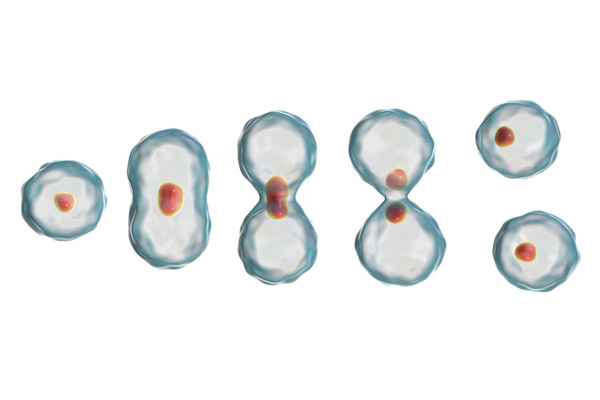
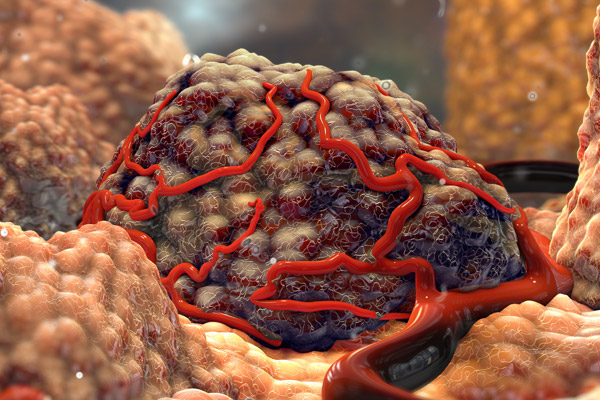
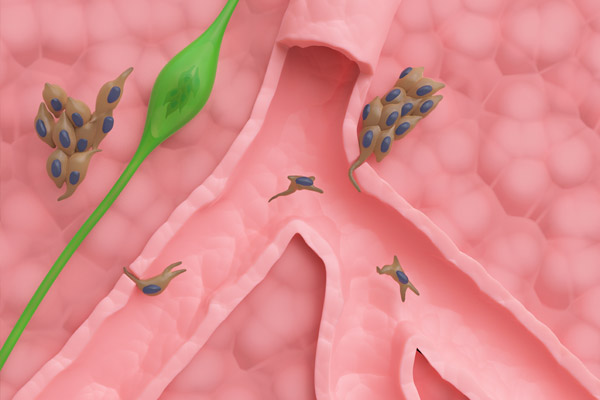
What action can we take against it?
I’m beginning to understand. Mutations to DNA strands occur at random, but we have some control over the ‘tools’ responsible for repairing them or destroying cancer cells, is that it? And we can ensure as few mutations take place as possible.
Exactly. The risk factors we discussed earlier increase the likelihood of developing cancer in several ways. Smoking, for example, dramatically increases the number of oxidant ‘balls’ bumping into cell structures. As a result, antioxidants are rapidly overwhelmed and the number of collisions increases. And with more collisions, there’s a higher risk that a key gene will be affected. And that’s not all: smoking also lowers the quality of the immune system by, in particular, reducing the effectiveness of the lymphocytes responsible for hunting down and destroying cancer cells … The same is true of atmospheric pollution, pesticides and toxic substances we might come across at work … A diet low in fruit and vegetables will provide insufficient exogenous antioxidants, thus increasing both the number of collisions on DNA strands, and the long-term risk of mutations.
As time passes, cell collisions accumulate resulting in minor functional flaws in most of our ‘tools’, which in turn contributes to yet more collisions. That’s why the risk of cancer increases with age: antioxidant systems and repair tools become less effective. The less effective they are, the greater the mutations and vice versa. In the end, everything accelerates …
You were saying earlier that some breast cancers may be genetic in origin?
You remember I talked about the patrol that examines the status of the recipe books (genes) in the library? By monitoring letter by letter to check for errors? Well, in approximately 2 women in 1000, the recipe that’s used for this patrol is slightly damaged from birth. In more technical terms, there’s a mutation in the BRCA1 and BRCA2 genes. These mutations don’t prevent the patrols from carrying out their inspections, but they’re less effective and more errors remain undetected.
And because of this, mutations accumulate more quickly in these women! Their risk of cancer is therefore much higher … However, there’s still an element of ‘luck’ here: not every woman who carries these genetic mutations will necessarily go on to one day develop breast cancer. As I was saying, they simply have more lottery tickets than other women. The figures speak for themselves: between 40% and 85% of these women will develop breast cancer before the age of 70 compared with 10% of women in the general population. They have a genetic predisposition. A disadvantage…
And what about exercise? And stress?
It’s thought that good stress management and a satisfactory level of physical activity helps combat cancer cells at an early stage. Exercise increases the speed, efficacy and attention of lymphocytes. An effective immune system can be crucial when a tumor really starts to become malignant. Rapid intervention is imperative at this point to prevent it from acquiring the sophisticated camouflage techniques mentioned earlier.
As for stress, the picture seems to be a little more complex. The latest studies suggest it can have a negative effect on many aspects of the fight against cancer. We know, for example, that chronic stress increases secretion of stress hormones called catecholamines. These molecules influence many of the body’s functions: they increase heart rate, reduce immune system quality, activate (temporarily) certain genes associated with cell proliferation, deactivate others associated with cell suicide (which control the famous detonating button), increase the growth of blood vessels (which may allow some tumors to avoid asphyxiation), and contribute to inflammation (a process which increases the number of oxidant ‘balls’) …
So I wasn’t completely wrong about my friend ! Maybe losing her husband didn’t cause her cancer, but surely it encouraged it?
You’re right, it’s highly likely to have done so. A number of studies show that major stress - psychological trauma such as the loss of a loved one or being abandoned - can contribute to the onset and progress of cancer, as well as the failure to detect it.
In fact, one of the first studies published on this subject concerned breast cancer. Back in 1893, a surgeon noticed that of the 250 breast cancer patients at his hospital, 156 had had a particularly harrowing experience at some point in their lives (1). But we’ve actually had to wait for the last 20 years for proof of this. In 2008, Professor Chida and his team (2) listed 165 studies showing that stress increases the incidence of cancer in healthy individuals, 330 others demonstrating that stress reduces survival among cancer patients, and 53 indicating that stress increases cancer mortality. Two years later, Professor Pinquart confirmed the psychogenesis of cancer (3), highlighting how despair and anxiety impacts the process.
Some studies suggest that it’s not stress itself that promotes cancer but our ability to manage it. And it’s clear we do not all share the same capacity for this. Some people find it easier than others to cope with stressful events, to fight off depression and to overcome grief …
All of which suggests that managing stress continues to be important after diagnosis?
Absolutely. And that’s by no means easy! Imagine how you’d feel if you found out today that you had cancer? You’d be completely shattered, your life in pieces. Nothing would make sense anymore; nothing would have any importance. In one fell swoop, you’d be paralyzed by stress and by your emotions. It’s terribly hard to manage stress levels at such a moment, to show any optimism, even though these are both important factors in battling cancer.
You wouldn’t be able to stop thinking about it, wondering what the future held, you wouldn’t be able to sleep properly anymore … And when you’re tired, everything takes on epic proportions and stress becomes even more difficult to manage. It’s a horribly vicious circle. Made worse by the fact that sleep also plays an important role in maintaining an effective immune response. In my view, it’s one of the reasons people turn to complementary strategies. They know that managing stress, eating a healthy diet and getting enough sleep are natural weapons that must be used in this battle.
Conventional or complementary treatments – or both?
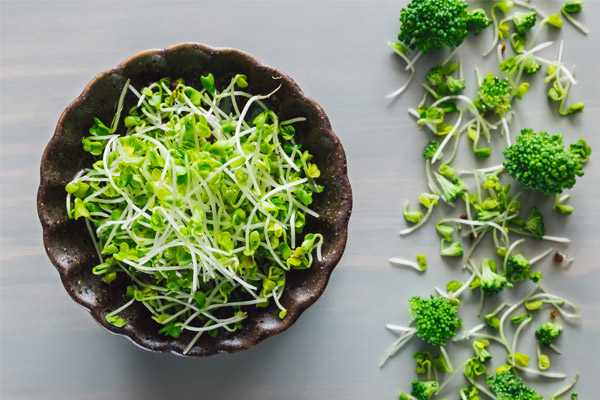
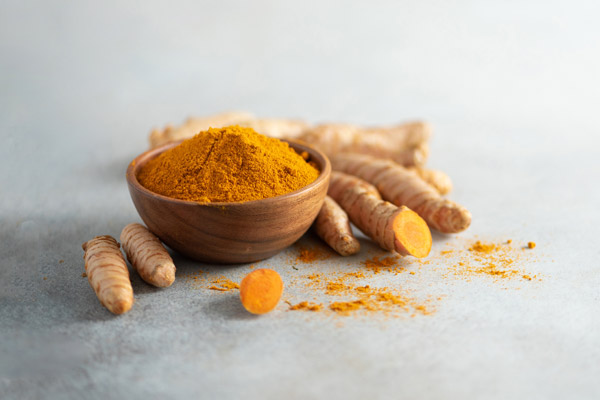
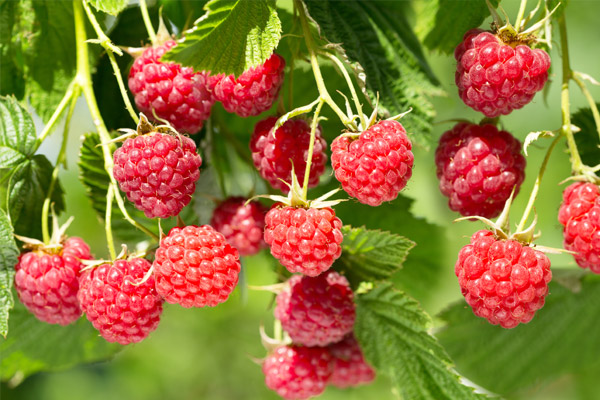
Are ‘conventional’ treatments really as effective as they’re said to be?
Of course. People are becoming more and more sceptical because of the media’s increasing inability to provide them with reliable information. You’ll see an article in the press one day about some miraculous treatment, only to read the next day, in the same publication, that it’s useless. Today’s media – at least in some cases – need to produce stories and attract readers with sensational headlines. But it doesn’t take long to realise that many of these articles are sloppily-written, insufficiently researched, distorted by short-termism and riddled with conflicts of interest. So naturally, you start to have doubts. About the media as well as the health authorities! And these doubts are never greater than when you’ve been diagnosed with cancer: when you’re desperate, you lose your critical faculties and are more inclined to believe in miracle solutions. At these moments, even the most rational people can fall prey to the most obviously-false claims, it’s only human. Sometimes, it’s because they’ve been through gruelling chemotherapy and radiotherapy and they simply can’t face any more of it. At these times, it can be reassuring to read such promises …
Unfortunately, there are individuals out there who understand this all too well and actually seek to exploit this vulnerability by convincing people their method is more effective than classic treatments. It’s something that has to be combatted. In 2017, an independent study conducted by Professor Johnsson showed that people with non-metastatic cancer who were refusing classic treatment in favour of alternative therapies (and there are increasing numbers of them) had an almost six times greater chance of dying from their disease.
That’s terrible! So we should forget about alternative medicine when it comes to fighting cancer? Forget about supplementation and phytotherapy?
Not at all ! The best approach seems to be to combine conventional treatments with any measures likely to improve quality of life, ie, managing stress, getting enough sleep, maintaining a positive mood, ensuring an effective immune system, receiving adequate pain relief … People who feel happier in their skin are better able to fight cancer. Not only are medical staff increasingly convinced of this, it has been proven by research, and thus more and more hospitals are incorporating these ‘complementary’ approaches into patient care. I insist on using the word ‘complementary’ rather than ‘alternative’.
What do these conventional treatments comprise?
The best-known treatment is undoubtedly chemotherapy. This consists of drugs that circulate in the blood, targeting an individual’s cancer cells in order to damage and destabilise them. These medications can slow down their growth or even stop them but they do not work in isolation: the body needs to capitalise on the cancer cells’ weak state to ‘finish the job’. Unfortunately, as you know, these drugs also destabilise other cells such as those in bone marrow, oral mucous membranes, the digestive tract and hair follicles, producing well-known side-effects such as hair loss.
Depending on the type of cancer a person has, its stage and site in the body, as well as the age and history of the individual, other treatments may be preferable to, or combined with, chemotherapy: surgery, radiotherapy which uses radiation to significantly damage the DNA of cancer cells but which is not always possible because it also damages neighbouring cells, and hormone therapy, a method that fights cancer cells that use hormones to help them divide (referred to as hormone-dependent cancers).
These conventional treatments should thus be combined with any safe technique, method or strategy that offers one or other of the following effects:
- improvement in physical and psychological well-being;
- reduction in anxiety and stress;
- reduction in fatigue and promotion of sleep;
- improvement in appetite;
- promotion of an optimal immune system;
- support for fighting inflammation (a breeding ground for cancer).
And diet can be one of these approaches, right?
Definitely. But there too, we need to be careful: there’s no end of supposed miracle diets out there which are actually nothing of the sort. Diet undeniably plays a role in the development of cancer but it’s complex. Scientific studies, together with the experience of practitioners, show that there are no miracle foods, only foods that encourage the progress of cancer cells and foods that help destroy them. It’s an obvious weapon for fighting cancer, by no means the only one, but it would be a shame not to use it.
Can you tell me some foods that help destroy cancer cells?
Well, if you could only choose six, these would be my choices:
- Red berries and fruits as they all contain at least one of the following three anti-cancer molecules : ellagic acid, anthocyanidins and proanthocyanidins.
- Cruciferous vegetables because of their high content in glucosinolates, and their ability to release powerful anti-cancer compounds called indoles and isothiocyanates.
- Alliaceous vegetables (garlic, onions, leeks) because of their sulfur-containing anti-cancer compounds: allicin, thiosulfinates, thiosulfonates, disulfides …
- Tomatoes for their high levels of lycopene, an antioxidant, anti-cancer carotenoid.
- Turmeric for its high curcumin content, obviously. Curcumin helps abnormal cells to self-sabotage (it encourages them to push the famous ‘explode’ button). The bioavailability of curcumin is low but numerous patented supplements are available that use techniques to significantly increase it.
- Tea and cocoa because they both contain antioxidant catechins that can combat the formation of new blood vessels around a tumor.
Numerous studies have also demonstrated the benefits of omega-3, and of a semi-vegetarian diet (fruits and vegetables contain a lot more anti-cancer substances), and the importance of preparing meals yourself, using local, seasonal produce. Oh, I almost forgot vitamin D! Many expert bodies recommend this vitamin for anyone at risk of cancer, especially in the autumn and winter months when sunshine is in short supply.
And foods to avoid?
First and foremost, all commercially-prepared ready-meals, as they contain too much sugar and salt, foods with a high glycaemic index, foods rich in omega-6, red meat, foods cooked at high temperatures, alcohol … It’s thought that these foods create an environment conducive to the development of cancer.
Alcohol? Surely that only applies to excessive consumption?
Unfortunately not, according to the latest data. Regardless of the type and amount consumed, alcohol is a known carcinogen. According to the WHO, it may be responsible for 11% of cancer cases in men and 4.5% in women, making it the second cause of avoidable death from cancer after smoking.
When alcohol is absorbed by the body, it is converted at varying rates into acetaldehyde as a result of two enzymes. It is this compound which is the most carcinogenic: it increases the number of ‘oxidant balls’ crashing into our cell structures. It has long been thought that certain compounds in red wine counteract the harmful effects of acetaldehyde but this may not actually be the case. It’s a complex subject and many studies that extol the virtues of red wine are funded by lobby groups with a vested interest in promoting such a message. It must be said, however, that consuming alcohol is often – though not always – associated with socializing and we know that being with friends and family has a positive effect on health …
I see. And when you talked about ‘supposed miracle diets’, were you thinking of ketogenic diets, for example?
Yes, amongst others. There’s also the alkaline diet and intermittent fasting. I’m not saying these diets should be avoided if you have cancer but it’s quite hard to recommend them. If you’ve been unfortunate enough to have had a friend or family member suffer from cancer, you’ll know just how difficult eating is for them when they’re undergoing treatment. In just a few weeks, cancer patients tend to lose a lot of weight. Their vitamin and mineral reserves become exhausted, their red blood cell levels go through the floor, their immune system is weak …
Most of the time, it’s the chemotherapy that makes them lose their appetite: patients suffer from intense nausea, their perception of taste changes (they often have a metallic taste in the mouth), they have aversions to certain foods, they find it difficult to swallow due to damaged mucous membranes, they have reflux problems … The chances are that if you advised a cancer patient to fast or to avoid all carbohydrates, you’d exacerbate this weight loss. And remember: in order to beat cancer, you have to be fit!
Yet this fasting diet is supported by a Nobel prize!
However brilliant a scientist is, even if they’ve been awarded a Nobel prize, they’re still human, they can still make mistakes. António Egas Moniz, winner of a Nobel prize in 1949 for his work on psychosis, invented the ‘lobotomy’, a surgical procedure which, far from curing patients, turned them into ‘vegetables’. Kary Mullis, winner of a Nobel prize in Chemistry in 1993, long maintained that the HIV virus was not responsible for AIDS. And unfortunately, people were influenced by this: many patients have refused conventional treatments, convinced they would be poisoned …
But getting back to the ketogenic diet, I have to admit the arguments are persuasive. At least on paper.
It all began back at the start of the 20th century, when the German biologist Otto Warburg discovered that cancer cells devoured 20 times more sugar than other cells. In fact, this discovery led to the development of a cancer-detection device: the PET scan. Very high sugar consumption detected by these scans in a particular area of the body is highly indicative of cancer.
Warburg discovered that cancer cells do not convert energy in the same way as healthy cells. They use a procedure that’s much quicker but less viable over the long term (4). Called glycolysis, this procedure enables the cancer cells to retrieve ‘ready-to-use’ elements in order to reproduce each of their cell components: DNA, proteins and lipids. This is a major advantage as they have to make a copy of their entire cellular contents – everything in their ‘plastic bag’ - as quickly as possible! And that’s very energy-intensive. How do they use more sugar than other cells? By increasing the number of glucose transporters that cross the barrier (the cell membrane). It’s as simple as that!
So all we need to do is stop eating high-sugar foods to cut off their supply!
That’s effectively the basis of the ketogenic diet. To significantly reduce consumption of carbohydrates so that the liver has to produce small molecules called ‘ketones’ or ‘ketone bodies’. This is an alternative fuel to sugar which can be used by almost all the body’s cells. In the same way that a hybrid car can run on either petrol or electricity, our cells can use both sugar and ketones. But it seems that most cancer cells don’t really like this alternative. As I was saying, the ketogenic diet, which is entirely suitable for the human body, can appear – and I would stress, appear, to be an attractive option. In practice, however, it’s unfortunately rather less convincing.
Firstly, because the body automatically regulates its blood sugar levels. Sugar circulating in the blood does not come from diet alone: it is produced by the body from muscles and fats. The body makes sure that blood sugar levels remain stable (glycaemic control), so this diet does not really result in cancer cells being deprived of sugar.
Secondly, scientists have recently discovered that some cancer cells (for example, those of the most common form of lung cancer) are able to use a completely different fuel when sugar is in short supply: glutamine, an amino acid found in abundance in dietary sources of protein (which are unavoidable when following a ketogenic diet!). Cancer cells are thus able to adapt and to reprogram their metabolism if necessary (5).
But there’s evidence that it works …
Evidence cannot ‘prove’ that a single measure is effective, especially in a disease as complex as cancer! If you’ve been following closely, you’ll know that curing cancer is never down to a single factor. Just as someone with an exemplary lifestyle can get cancer, so someone who eats an unhealthy diet during their cancer treatment can still pull through. One example does not constitute proof.
That’s why we conduct scientific studies. And it must be said that those carried out on this subject are very tentative … A meta-analysis published in the Journal of Human Nutrition and Dietetics in 2018 identified them all and the results are very mixed. Clinical studies suggest a slight benefit from the ketogenic diet, others show no effect on tumors, and even a possible adverse effect. In respect of intermittent fasting, five out of nine studies suggest it maximises the effectiveness of chemotherapy, but four others showed either no effect, or a reduction in this effectiveness (6).
But we should remain cautious: it’s difficult to measure the efficacy of a particular diet with so little clinical research to draw on. There’s inconsistency among the studies as to how the diets were administered and the number of subjects involved is very small … Let’s just say that for the moment at least, the jury’s still out. It’s highly likely that a dramatic fall in sugar consumption, particularly high GI sugars, helps fight cancer. Just as such an effect is possible from reducing blood sugar levels in people with hyperglycaemia (7). But is it really worth giving up carbohydrates completely? Relying solely on eating dietary fats and protein? No, if existing studies are any indication. What’s more, it’s a highly-restrictive diet and as you can imagine, this is not the ideal time to be imposing such a strict regime. And many carbohydrates are also high in antioxidants and anti-cancer substances …
Fruits and vegetables?
Exactly.
What about natural supplements?
They can be useful. Indeed, more and more health professionals are including them as part of their treatment. It’s important to choose high quality products and to take them under the supervision of a professional as some of them contain active principles that may interfere with conventional treatments. And remember, they won’t ‘cure’ cancer: they simply improve the body’s ability to fight it, by reducing stress, optimising the immune system, combatting inflammation, enhancing well-being and helping the patient cope with pain. As you’ve seen, that can make a real difference. Some natural products can also intervene at certain points in the processes mentioned.
##SEE:article,0457,,A broccoli sprout extract standardized in glucosinolates##Pain? Cancer also causes physical pain?
Tumors can put pressure on neighbouring areas, including the back, nerves and organs. They can also impair blood flow and block organs such as the colon. Some examinations can be painful, as can treatments like chemotherapy, radiotherapy and surgery (incisions, scars, numbness …). Following chemotherapy sessions, many people feel as if they’re suffering from severe ‘flu. It’s hard to accept as these treatments are supposed to be making them better, not worse. As intense stress exacerbates sensitivity to pain, everything becomes more unpleasant and harder to cope with. This is also the reason people often turn to therapies such as acupuncture, massage, meditation and guided imagery.
What exactly happens when things go wrong? How does a tumor end up being fatal?
It’s not the proliferation of cancer cells that causes death. They don’t suddenly attack other healthy cells, but because they gradually invade the body, they end up compromising vital organs which can no longer function.
When cancer cells spread from their original site to, say, the lungs, it’s called metastasis – they become much more dangerous because they prevent the lungs from properly capturing oxygen, potentially resulting in death by suffocation. If these same cells migrate to the liver, they interfere with detoxification processes, gradually poisoning the blood and potentially leading to hepatic coma. But if the tumor is localised in a non-vital organ such as the breast, it seldom leads to death. As long as the tumor has not metastasised in the body, there’s everything still to play for! But action needs to be taken quickly as eventually, all cancer cells end up ‘looking for new horizons’…
What advice could I give my friend without bombarding her with information?
The mere fact of seeing her regularly is already a big help. Social isolation is very detrimental to our ability to fight cancer: even if you don’t always know what to say to her, she’ll feel supported and she’ll know you’re thinking about her.
You can discreetly ensure she maintains her critical faculties and does not start believing everything she hears or reads without first discussing it with the health professionals in charge of her care, or consulting specific associations … The more she understands what’s happening to her, the more likely it is she’ll make the right choices in fighting it. It’s vital to make informed decisions as early as possible.
So to sum up then, could you attempt to formulate a theory as to how her cancer has occurred and how it’s been able to develop?
There’s no end of hypotheses that could be made. But here’s one which might be plausible. Your friend fell victim to several critical mutations over 10 years ago, undoubtedly through bad luck, but perhaps also as a result of a particular stressful event at that time. Perhaps she already had a genetic predisposition to this mutation -we’ll never know. Slowly, this cell began to divide, gradually giving rise to a very small tumor. Deprived of nourishment, it remained hidden, without developing further because she had a stable emotional life and a healthy lifestyle. Then, after one or more chance mutations, the tumor managed to divert blood vessels to its advantage, and even to camouflage itself to avoid being picked up by her immune system. And perhaps when your friend experienced the traumatic event you mentioned, the tumor took full advantage, acquiring the most dangerous weapon: the ability to infiltrate her blood vessels and explore other places in her body. Cancer development is neither linear nor regular: remember that in order for it to become aggressive and dangerous for the body, it has to successively acquire several ‘smart’ strategies’.
Do you have further questions about cancer you’d like us to answer ? If so, please send us an email at contact@supersmart with the subject heading ‘Conversation about cancer’, or ask your question directly in the comments section - we may include it the next time we update the article.
References
- Snow H. Cancer and the cancer process. London, Churchill, 1893, pp 33-34.
- Chida Y, Hamer M, Wardle J, Steptoe A. Do stress-related psychosocial factors contribute to cancer incidence and survival? Nat Clin Pract Oncol. 2008 Aug;5(8):466-75. doi: 10.1038/ncponc1134. Epub 2008 May 20.
- Pinquart M, Duberstein PR. Depression and cancer mortality: a meta-analysis. Psychol Med. 2010 Nov;40(11):1797-810. doi: 10.1017/S0033291709992285. Epub 2010 Jan 20.
- Malthièry, Y., & Savagner, F. (2006). Métabolisme énergétique de la cellule cancéreuse : exemple des tumeurs endocrines riches en mitochondries. Annales d’Endocrinologie, 67(3), 205–213. doi:10.1016/s0003-4266(06)72588-4
- Vincent E, Alexey Sergushichev, et al. Mitochondrial Phosphoenolpyruvate Carboxykinase Regulates Metabolic Adaptation and Enables Glucose-Independent Tumor Growth, DOI:https://doi.org/10.1016/j.molcel.2015.08.013.
- Rapport « Jeûne, régimes restrictifs et cancer : revue systématique des données scientifiques et analyse socio-anthropologique sur la place du jeûne en France ». NACRe 2017
- Foretz M, Viollet B. Les nouvelles promesses de la metformine : vers une meilleure compréhension de ses mécanismes d’action. Med Sci (Paris) 2013 ; 29 (sous presse)
Keywords
1 Days
Great customer service - responsive …
I ordered from them and my item was unavailable for sometime. I was super happy when they reactivated my order and shipped my item which arrived very quickly. Great customer service.
Ruth Rueter
2 Days
Super fast shipping
Super fast shipping
Donald Borling
5 Days
Reputable companysearch and the number of…
The research and the number of selection of products.
NAKHJAVAN Shervin
18 Days
The Anti Aromatase is a great product
The Anti Aromatase is a great product. You just need to have constant inventory. Recently this product has been out of stock.
GEORGE Verne
20 Days
Great help on chat
Great help on chat. Knowledgeable and friendly.
Jason Argos
23 Days
Customer service was fast and friendly.
Customer service helped to stop the transaction process of the subscription. I appreciated that.
Greenie
24 Days
I order here due to the high quality of…
I order here due to the high quality of the products and the quick delivery of items - thank you
Barbara J
25 Days
SuperSmart's Eye Pressure supplements: highly recommended!
I purchase SuperSmart's Eye Pressure supplements regularly for over 5 years, and gotta say they are truly a wonderful product for my Glaucoma. Highly recommended if you have eye pain from your Glaucoma.
D. Martinez
30 Days
Quick service
Quick service
MONELL
30 Days
Speedy service.
Speedy service.
ROSENTHAL Marvin
34 Days
Clear website- Efficient
Clear website. Excellent search engine and fast delivery!
Mohamad Hussein
37 Days
They have great products.
They have great products.
Vickie
37 Days
Great Shipping Time!
You Have A Great Shipping Time! Praise The Lord!
DMHoge
39 Days
Doctor Recommended!
Good pricing, very good availability, doctor recommended (couldn't find what I needed anywhere else), and it took only a week to arrive (which I can't complain about).
Al
39 Days
Great product and fast shipping
Great product and fast shipping
Marie

